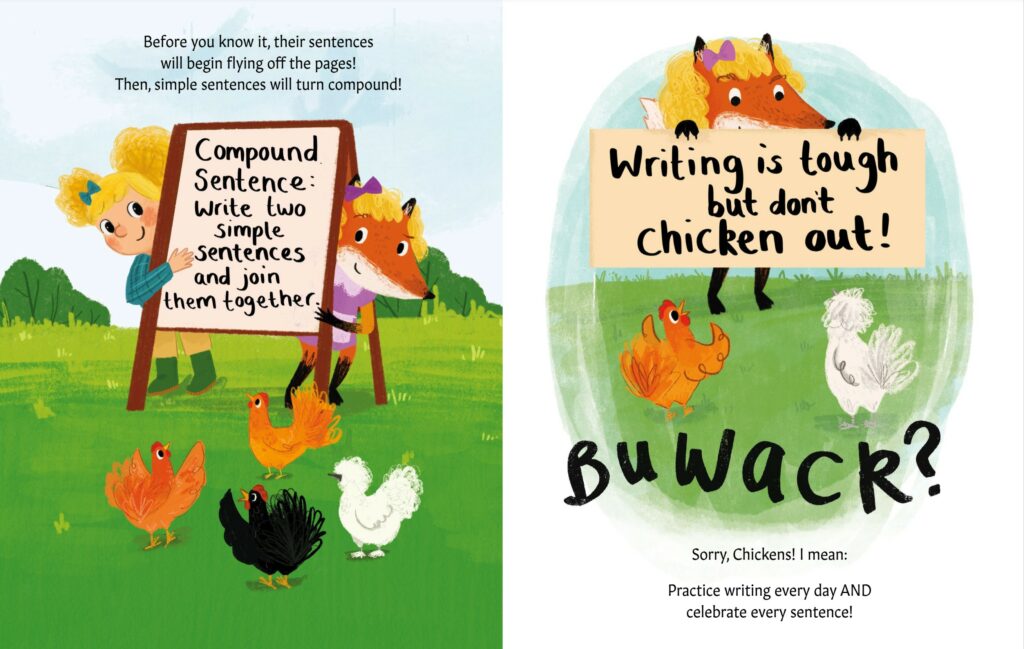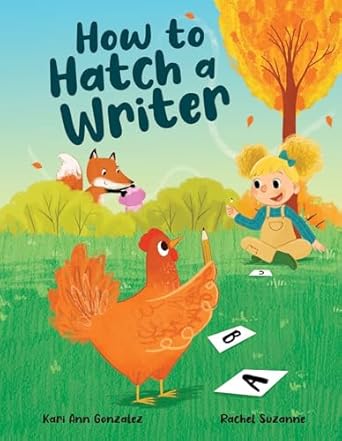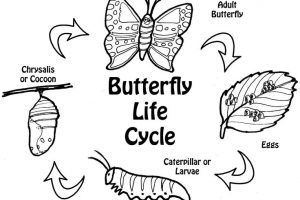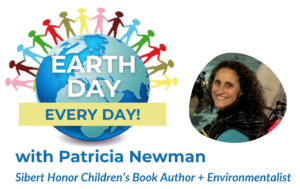GUEST BLOGGER KARI ANN GONZALEZ
Syntax provides us with the “rules” for writing sentences that make sense. Placing words in the proper order, applying appropriate capitalization, and using appropriate punctuation create sentences with clear, complete thoughts. The following three easy activities celebrate imagination and creativity while reinforcing syntactic awareness with humor and themes from How To Hatch A Writer.
Activity #1: Pick the perfect punctuation
Materials
- Whiteboard and dry-erase marker
Instructions
In How To Hatch A Writer, the narrator advises the chickens to “Peck the perfect punctuation to end every sentence.” Write the following sentences on the whiteboard without punctuation. As a class activity, ask for student volunteers to practice adding the proper punctuation to the following sentences and to read them aloud:
- The chickens have a pet worm_
- They love books_
- When can we go to the library_
- Writing can be really tough, but don’t chicken out_
- What did the fox say_
- Fox was so excited to eat soup_
- What is your favorite soup_
- Practice writing every day_
- Celebrate every sentence_

Activity #2: Word scramble
- Whiteboard and dry-erase marker
- Paper and pencil
Materials
Instructions
Write the following scrambled sentences on the whiteboard. Using a pencil and paper, ask students to write the unscrambled words to form a proper sentence. Once the sentence is unscrambled, ask students to add capitalization and the appropriate punctuation:
- chickens I love
- sneaky are foxes
- soup loves the fox
- is favorite what book your
- practice writing do you how
Activity #3: Sentence elaboration
Materials
- Whiteboard and dry-erase marker
- Paper and pencil
Instructions
Write who, what, where, why, and when on the whiteboard as a list. Walk through the example below to show how students can ask themselves questions to build stronger sentences with informative details. Using a pencil and paper, ask students to work individually to elaborate on a sentence by asking key questions to fill in the details and form a strong sentence. Start with who, then fill in what, when, where, and why.
Example
- Who?
- The fox
- What about the fox?
- The fox wandered.
- Where?
- The fox wandered through the woods.
- Why?
- The hungry fox wandered through the woods in search of something scrumptious to make soup.
- When?
- Today, the hungry fox wandered through the woods in search of something scrumptious to make soup.
Prompt
- Who?
- The chicken
- What about the chicken?
- Where?
- Why?
- When?
When finished, ask student volunteers to read their sentences to the class. Highlight and celebrate that though they all started with the same “Who”, their individual imaginations and creativity have led to the creation of very unique, elaborated sentences.

Featured image credit: “Girl in a classroom” by World Bank Photo Collection is licensed under CC BY-NC-ND 2.0.
Kari Ann Gonzalez is a children’s writer who loves tending to her tiny hobby farm and stuffing her little free library full of books. Her debut picture book HOW TO HATCH A READER won the Northern Lights Picture Book award for humor, while HOW TO HATCH A WRITER has been named Hot Off The Press by CBC, and Reviewer’s Choice on Midwest Book Review’s Children’s Bookwatch. She is excited to share her newest titles, IF YOU LIVE ON A FARM, GOAT MAA-TH, and four more titles to be announced soon! A flock of plucky chickens are kind enough to share their home with Kari, her husband, and their two little girls. For more information, please visit Kari’s website at www.karianngonzalez.com or follow her on social media at the following social media handles: Twitter: @karianngonzale1, Instagram: Kari_Gonzalez_Writes, Facebook: Kari Gonzalez, Bluesky: @karigonzalezwrites











Leave a Reply
Your email is safe with me.